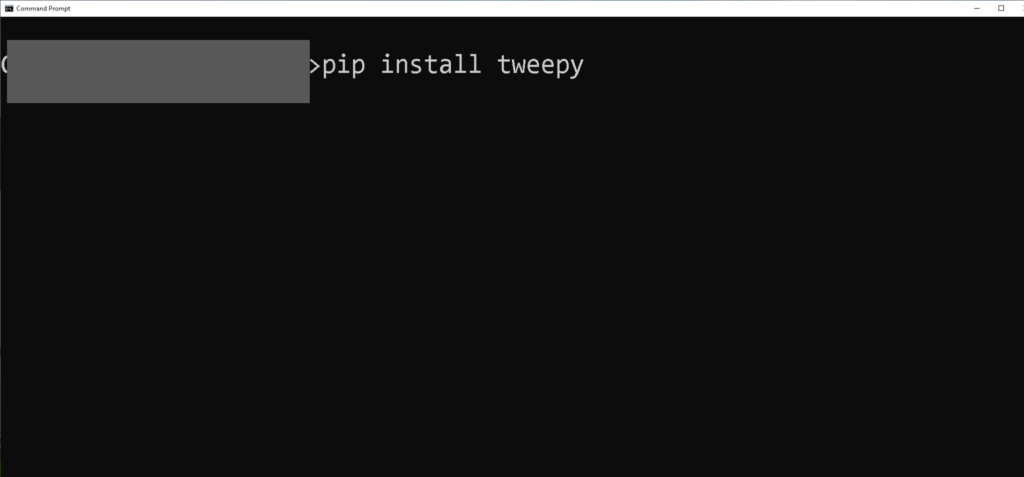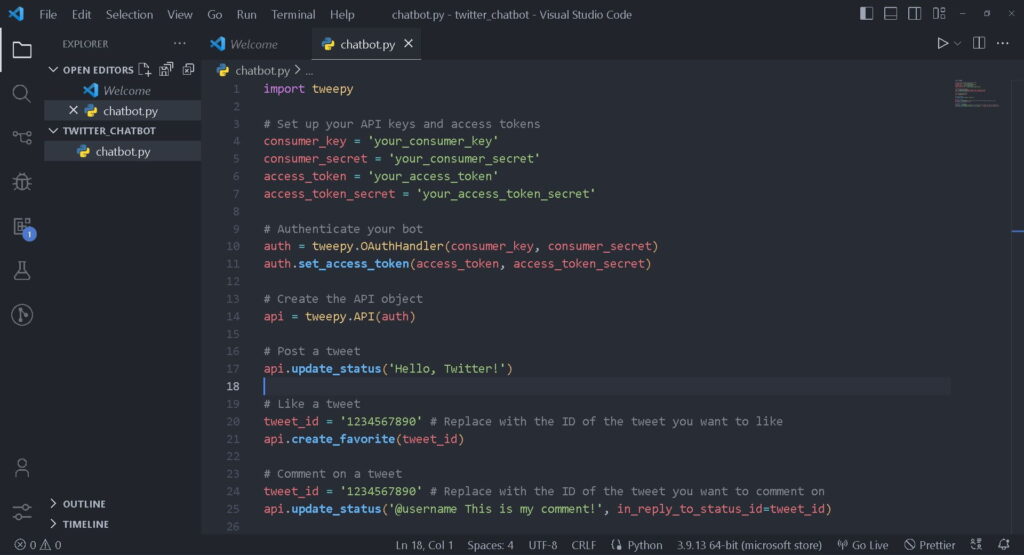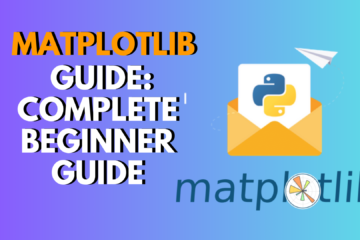
Table of Contents
Create a Python project : Social Media Bot that can tweet, like, or comment on websites like Reddit, Instagram, or Twitter.
Although creating a social media bot can be challenging, I can give you a general overview of the process.
Social media chatbots (Python project)
A social media chatbot is a powered by AI tool that interacts with users on social media platforms. It uses natural language processing (NLP) to comprehend user inquiries and deliver pertinent answers in real-time.
They provide 24/7 availability, quick responses, and cost savings, and can be utilized for lead creation, engagement, and customer service. To protect sensitive data and user privacy, however, as well as to let consumers know they are engaging with a chatbot, ethical and transparent design is essential.
Step 1: Choose a Social Media Platform (Twitter)
Choose the platform on which you want to build the social media bot as the first step in creating one. You must familiarize yourself with the terms of service and API documentation for each social media network to make sure your bot conforms with their restrictions. Each social media platform has its own API.
We’ll concentrate on creating a Twitter bot for the sake of this example.

Step 2: Set up a Twitter Developer Account
To use the Twitter API, you will need to set up a Twitter developer account and create a new Twitter application. Follow these steps to set up your developer account:
1- Log in with your Twitter account on the Twitter Developer website.
2- To submit an application for a developer account, click the “Apply” button.
3- Give a brief justification of your use case for the Twitter API in the application form.
4- Wait for Twitter to approve. This may require several days.
Once your developer account has been approved, you can create a new Twitter application and obtain the necessary API keys and access tokens to authenticate your bot.
Step 3: Install Required Libraries for this python project
Use a Python library that can communicate with the Twitter API if you want to create a bot that can post, like, or comment on Twitter. There are several libraries available, however for this example, we’ll utilize the tweepy library. Run the following command in your terminal or command line to install tweepy using pip:

Step 4: Write the Code
Here is an idea of how to create a simple Twitter bot with tweepy:

Here all the code :
import tweepy
# Set up your API keys and access tokens
consumer_key = 'your_consumer_key'
consumer_secret = 'your_consumer_secret'
access_token = 'your_access_token'
access_token_secret = 'your_access_token_secret'
# Authenticate your bot
auth = tweepy.OAuthHandler(consumer_key, consumer_secret)
auth.set_access_token(access_token, access_token_secret)
# Create the API object
api = tweepy.API(auth)
# Post a tweet
api.update_status('Hello, Twitter!')
# Like a tweet
tweet_id = '1234567890' # Replace with the ID of the tweet you want to like
api.create_favorite(tweet_id)
# Comment on a tweet
tweet_id = '1234567890' # Replace with the ID of the tweet you want to comment on
api.update_status('@username This is my comment!', in_reply_to_status_id=tweet_id)
Using your API keys and access tokens, this code authenticates your bot, builds the API object, and then shows you how to send a tweet, like a tweet, and comment on a tweet.
Step 5: Test Your Bot
1- Run your program: Run your Python code from the command line or terminal after opening it in an IDE or text editor. Verify that there are no runtime or syntactic mistakes.
2- Test tweet posting: To check if a tweet was successfully posted, run the code to submit a tweet and then check your Twitter account.
3- Test liking a tweet To test liking a tweet, find a tweet on Twitter and note its tweet ID( a unique identifier for the tweet). Replace thetweet_id variable in the law with the tweet ID, run the law to like the tweet, and also check if the tweet is now marked as” Liked”.
4- Find a tweet on Twitter and make note of its tweet ID to test out comments on that particular tweet. To comment on a tweet, replace the tweet_id variable with the twitter ID, execute the code, and then verify that the remark is now available as a reply to the original tweet.
5- Test your bot’s error handling. For example, test what happens if the API request fails or if the user input is incorrect. If you purposefully enter wrong data, try to check if the bot responds as you would anticipate.
6- Test rate limiting: The Twitter API contains rate restrictions, which restrict the amount of queries your bot can do per minute or per day. Test how your bot responds to errors or waits for the rate limit to reset when it reaches the limit.
7- Make sure your bot conforms with Twitter’s standards and terms of service by testing compliance. For instance, refrain from posting spam, acting abusively, or violating users’ privacy.
Before launching your bot, you may find any problems by extensively testing it. You may start deploying your bot on a server or cloud platform as soon as you are sure it functions as planned.
Step 6: Deploy Your Bot
You must deploy your bot to a server or cloud platform if you want it to run continuously. There are several choices, such as Heroku, AWS, and Google Cloud.
Make sure your bot conforms with the platform’s rules and terms of service by adhering to the deployment instructions it provides.
Conclusion for this python project
I’m done now! This should give you a rough concept of how to use Python and Tweety to create a social media bot.
However, it’s crucial to keep in mind that creating and deploying bots may be challenging and time-consuming.





0 Comments